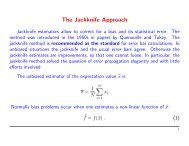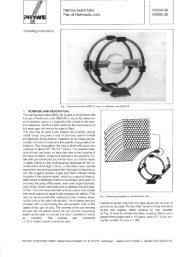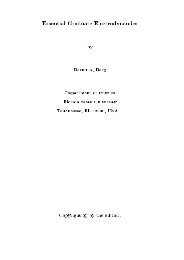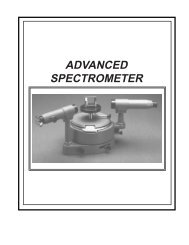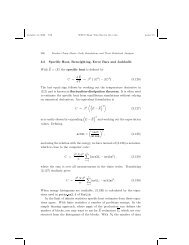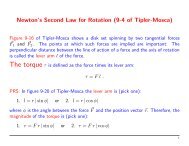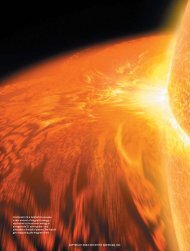MICROWAVE OPTICS - Granular Materials Laboratory
MICROWAVE OPTICS - Granular Materials Laboratory
MICROWAVE OPTICS - Granular Materials Laboratory
Create successful ePaper yourself
Turn your PDF publications into a flip-book with our unique Google optimized e-Paper software.
Microwave Optics012-04630F➤ NOTE: q is just the angle that you read directlyfrom the Degree Scale of the Goniometer.RefractedBeamq = _________________________.q 1q4 Using the diagram shown in Figure 4.3, determine q 1and use your value of q to determine q 2. (You willneed to use a protractor to measure the Prism angles.)q 1= _________________________.q 2= _________________________.5 Plug these values into the Law of Refraction todetermine the value of n 1/n 2.n 1/n 2= _________________________.IncidentBeamq 2Normal toBoundary ofRefractionFigure 4.3 Geometry of Prism Refraction6 The index of refraction for air is equal to 1.00. Use this fact to determine n 1, the index ofrefraction for the styrene pellets.Questions1 In the diagram of Figure 4.3, the assumption is made that the wave is unrefracted when itstrikes the first side of the prism (at an angle of incidence of 0°). Is this a valid assumption?2 Using this apparatus, how might you verify that the index of refraction for air is equal to one.3 Would you expect the refraction index of the styrene pellets in the prism mold to be the same asfor a solid styrene prism?18



